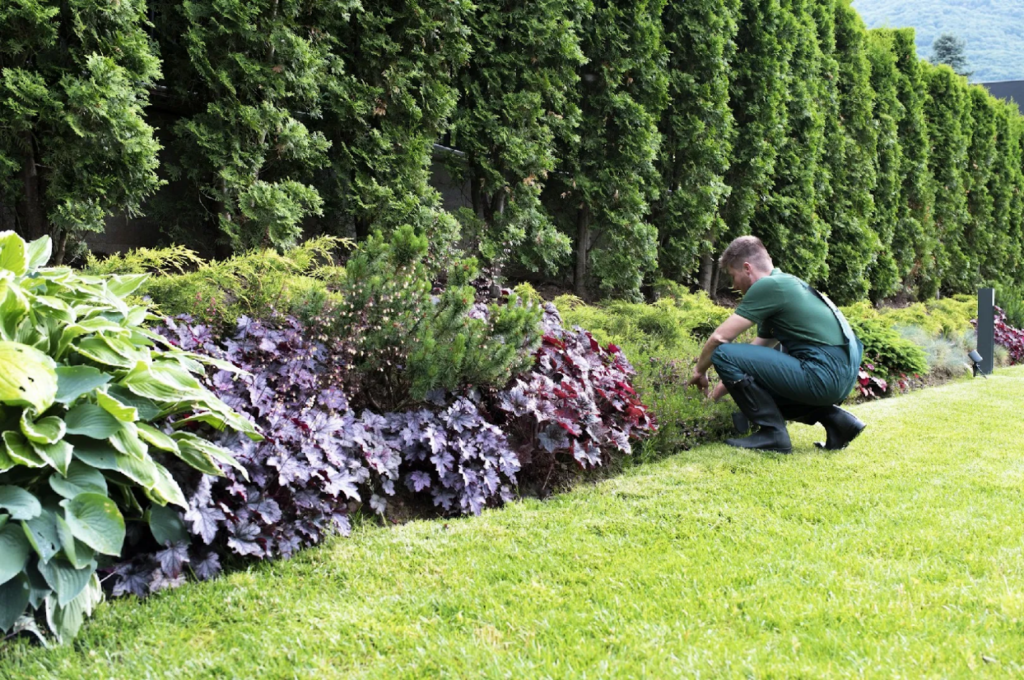To keep your outdoor space looking its best all year, you must attend to it regularly by adapting its preservation for every season. Such may have been the case if you lived in Hampstead, which experiences freezing winters or harsh summers. This guide will help us understand how to do seasonal landscaping and when to do it according to the weather conditions of Hampstead. It covers everything from pruning and mulching to fertilizing and preparing for extreme weather conditions that can assist in maintaining a stunning garden throughout the year.
1. Spring: The Rebirth Period
Spring is the ideal time to initiate your landscape maintenance routine as temperatures rise and plants come alive after their winter dormancy. Below are some essential activities for this season:
Pruning/Trimming: Prune overgrown branches or shrubs to promote healthy growth, maintaining an attractive appearance.
Mulching: Redo the flower beds with new mulch and add fresh trees around them; this helps preserve moisture, prevent weeds from growing, and improve soil fertility.
Fertilizing: Grant your lawn and garden a balanced fertilizer so essential minerals can easily be absorbed into the soil for proper development.
Weed Control: Keep weeds at bay by manually removing them or using organic methods to eradicate them to avoid competition with plants for nutrition and water.
2. Summer: Beating the Heat
It is summer in Hampstead; temperatures rise very high while conditions become very dry, creating difficulties keeping up with an attractive landscape. Here are some tips to keep your outdoor space blooming during the hottest months of the year:
Watering: In summer, flowers should be watered in deep, infrequent intervals. Early morning watering will reduce evaporation, thereby preventing water loss due to the evaporation mechanism during hot seasons.
Pest and Disease Management: Pests may attack your plants when least expected. Watch out for any signs of pests and plant diseases and act immediately before they spread further.
Mowing and Edging: Despite the heat, regular mowing and edging ensure that your yard still looks tidy. Raise your lawnmower’s cutting height to prevent grass from being stressed by excessive heat.
Shade and Shelter: The sun’s harsh rays necessitate you to provide shade or shield delicate plants and fragile parts of your compound from this effect.
3. Fall: Preparation for Winter
With cooler temperatures creeping in together with shorter days, autumn is just the right season to prepare your landscape for winter ahead; here are a few things to consider during this period:
Leaf Removal: Remove fallen leaves from your lawn and garden by raking or using leaf blowers. This is because piled-up leaves suffocate grasses while acting as breeding sites for disease-causing organisms, including pests.
Aeration and Overseeding: Another method involves aerating to increase airflow into the soil, hence facilitating root penetration, oxygenation, nutrient infusion near roots, etcetera; if there are areas where grass doesn’t grow thickly but many of them are bare patches, then add more seeds to that part to make grass grow healthily.
Planting Bulbs: Fall is the best time for planting spring-blooming bulbs such as tulips, daffodils, and crocuses to give your garden a splash of color in the coming year.
Gutter Maintenance: Clear gutters and downspouts so water flows freely during winter storms without damaging your home or surrounding landscape.
4. Winter: Protecting Your Outdoor Space
Although winter is typically seen as a time for staying indoors, several responsibilities must be performed to protect the garden from harsh weather conditions. Here are some ways you can maintain your outdoor space throughout the coldest season:
Winter Pruning: Remove dead or damaged branches from dormant trees and shrubs before sprouting begins in spring.
Snow and Ice Removal: Keep walkways, driveways, and paths clear of snow and ice to avoid slips and falls. To cater to icy areas, provide sand or use ice melt.
Protecting Tender Plants: Use burlap or frost cloths to wrap sensitive plants against freezing temperatures and drafts. Consider moving potted plants indoors or finding sheltered locations for them when there’s a chance of frostbite.
Equipment Maintenance: In the wintertime, when gardening slows down, you should service your landscaping tools, including sharpening mower blades or washing dirt off garden spades, etcetera.
Conclusion: Your Seasonal Landscape Maintenance Guide
With proper planning and attention to seasonable tasks, you can keep your outside looking beautiful and lively in every season in Hampstead. With this guide, you will know how to handle different seasons and overcome the challenges that may come with them while still enjoying a thriving and vibrant landscape.







